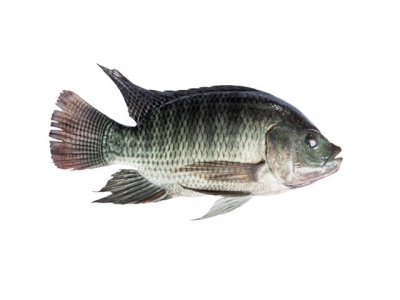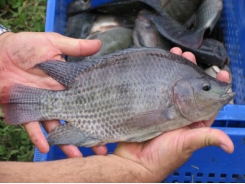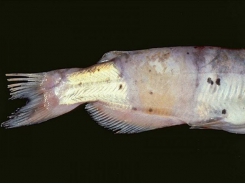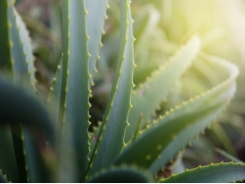Nutriad looks to boost survival, FCR and fish health as disease ups the stakes in tilapia

Nutriad flagged up some of the current challenges in production of freshwater fish like tilapia, with disease being central to that, at Aqua 2018 in Montpellier.
In terms of aquaculture, the feed additives producer is working across the different regions mainly in Mediterranean and tropical fish and shrimp species:
“Asia is really our main focus for expanding our team and also in terms of tackling the different production challenges that farms in that region face,” said Peter Coutteau, business unit director aquaculture, Nutriad, when we spoke to him at that event earlier this month.
“We are not that much focused on salmon, which is very advanced farming. We see much more potential in markets that are under-developed in terms of feed formulation and additive use.”
Freshwater fish
Boosting survival, improving health, and getting fish to convert feed more efficiently is key to Nutriad’s approach to optimizing freshwater fish production. Freshwater fish feed formulation is focused on low spec, low cost ingredients so improving nutrition efficiency and metabolic efficiency is critical, he added.
Outlining some of the challenges in Asian freshwater fish production, he said disease ranks highly:
“Tilapia is suffering a lot... When you look at, for example, tilapia production in a country like Thailand, at a certain moment, we have seen, in some farms, that they have less than 50% survival in the nursery and, again, less than 50% survival in the grow-out.”
The reason is they have a battery of viral, bacterial and parasitic diseases from the very early stages onwards, he explained.
“Essentially, they have a fry, they stock it in pond systems, or in cages, and they take very good care of these animals, but the water, the surroundings, are not biosecure.
“Surprisingly, we always thought that additive potential was limited in these species as they are not as high a value species as marine fish, but, actually, we have seen that some of our products, that might have been seen as relatively expensive for such fish, give very big returns in terms of survival.”
It is nearly impossible to develop a biosecure environment for tilapia production, which relies on open systems, in Asian markets, he said.
“It would cost too much in terms of investment to make production secure. The price of tilapia doesn’t justify the investment.”
Tilapia production in Brazil does not suffer so much from diseases most of the year, but there are periods where the temperatures are not ideal when farmers also have massive problems with certain bacteria and where vaccinations are not yet fully developed or adequate, he continued.
“And parasites, for example, you find everywhere, there are no vaccinations against parasites. Parasite prevention is one of the more complicated issues.”
Along with farm management approaches, feed additives can be part of the strategy against parasites - combination products that work on the immunity of the fish and work against the parasites, he said.
“Some of them may improve the mucous protection of the fish; others can reach the parasite in the blood stream – natural anti-parasitic products – so called phytobiotics or herbal extracts.
“We are doing quite a bit of work in this area, using all-natural products only. These are products designed for use in prevention programs so they should be in the feed before the program starts. The most important effect of these is the reduction of the impact of the parasite on productivity. You are basically giving the fish more time to cope with parasites; you can reduce mortality.”
In terms of addressing such disease challenges long term, Coutteau sees a combination of genetics, functional nutrition and fry quality playing a big role.
“I think a major area for improvement in freshwater fish production is the quality of fry. There is so much to do in Pangasius and tilapia production in that regard. When there were fewer diseases, it was so much easier to produce freshwater fish than marine fish so, as a result, they have quite sloppy protocols.”
In addition, sometimes the feed given to freshwater fish broodstock is not appropriate for reaching an optimal egg and fry quality, he said.
Feed costs
The freshwater fish sector is also burdened with high costs, feed in particular.
“This is very acute in freshwater fish. However, we have seen that with some of our digestive enhancers, we were able to get more out of feed - returns of 4-5% improvement on FCR. At the end of the day, it is about better feed cost efficiency. There is a lot of potential here. We have seen it with relatively low inclusion products where you can get a better digestive and/or metabolic efficiency. For example, in tilapia, we have some products that steer the energy less to visceral fat accumulation and more to meat gain – that, in fact, is more about metabolic steering - you give the same amount of feed but you end up with less visceral waste, more fillet and a better FCR.”
Shrimp
Health enhancement, of course, is a focus for additive suppliers when looking at shrimp production as well.
“White spot syndrome virus (WWSV) is still an issue when temperatures are not optimal and white feces syndrome (WFS) remains a big issue in all the shrimp producing countries in Asia.
“However, we hear that Early Mortality Syndrome (EMS) is being tackled through functional feeds as well as better fry and nursery systems, and better biosecurity.”
In terms of functional feeds options, he reckons the shrimp industry now has more tools at its disposal to fight opportunistic vibrio through the feed.
The Belgian based company has a range of products addressing digestive and metabolic efficiency and shrimp health.
“No doubt, though, for the shrimp sector right now, the number one challenge and, one that is probably going to stay a while, is the lower market price. Until a half year ago the major challenge was disease - today it is the price.
“We are back on record production but demand is not following for different reasons. I think local markets are not well developed – there is low shrimp consumption in major producers like India. Growing middle classes in producing countries could eat more shrimp – there is too much dependence on the export market.”
Aqua focus following acquisition
Coutteau also flagged up the benefits for the aquaculture sector from the recent acquisition of Nutriad by Adisseo - one being an expanded portfolio.
Adisseo, which has typically more focused on livestock sector, can take advantage of Nutriad’s long experience in the farmed fish sector, he said.
“There are a number of Adisseo products that are already being used by aquaculture customers like methionine and organic selenium and so we will further expand the use of these products in the aquaculture industry. Adisseo also has interesting platforms that we can develop for aquaculture –such as its enzyme and probiotic platforms.
“So there are both short-term and long-term synergies there.”
Related news
Tools

Phối trộn thức ăn chăn nuôi

Pha dung dịch thủy canh

Định mức cho tôm ăn

Phối trộn phân bón NPK

Xác định tỷ lệ tôm sống

Chuyển đổi đơn vị phân bón

Xác định công suất sục khí

Chuyển đổi đơn vị tôm

Tính diện tích nhà kính

Tính thể tích ao




 Essential oils and parasite control in aquaculture
Essential oils and parasite control in aquaculture  Bee glue, aloe supplement may boost tilapia survival…
Bee glue, aloe supplement may boost tilapia survival…